| Day 6 Lijiang, Zhongdian ( B,L ) |
| After breakfast, we will drive to visit First Bend of the Yangtze River and upper Tiger Leaping Gorge, then drive to Zhongdian (Shangri-la) directly. Visit pasture of Xiao Zhongdian on the way. Upon arrival Zhongdian, free time at your leisure. |
Shigu Town | The Jinsha River does a U-turn at Shigu Town and flows northward, Then it changes the direction and goes to the northeast. | Tiger Leaping Gorge | The Tiger Leaping Gorge is one of the world's four great gorges - The Tiger Leaping Gorge is 17 kilometers long with a drop of 213 meters. The gorge is divided into three sections: Upper, Middle and Lower Hutiao. At the narrowest spot the river is only 30 meters wide. |
|
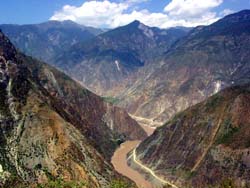 |
| [ Optional ] Shigu Town: The Jinsha River does a U-turn at Shigu Town and flows northward, Then it changes the direction and goes to the northeast. |
|
| Day 7 Zhongdian ( B,L ) |
| Today we will drive to visit the Puda Tso National Park, including Shudu Lake & Bitahai Lake. Later drive back to Zhongdian, pay a Tibetan Family visiting on the way. Visit the Songzanlin Monastery, if you come at the right time, you may see the Lama having their evening lessons, and many Tibetan people enjoying the ceremony. |
Bitahai Lake | Bitahai Nature Reserve, located 35 kilometers east of the county seat of Zhongdian, it is an intact natural attraction with outstanding flora and fauna and picturesque landscapes.In the reserve itself, century-old pines and cypresses grow around Bitahai Lake, in which the water is crystal clear. | Songzanlin Monastery | Songzanlin Monastery, or 'Little Potala' as it is affectionately known, is a spiritual place that invites you to discover the mystery and traditions of Tibetan Buddhism. It is the largest Tibetan Buddhism monastery in Yunnan Province. Such a sacred place seems to purify the soul. |
|
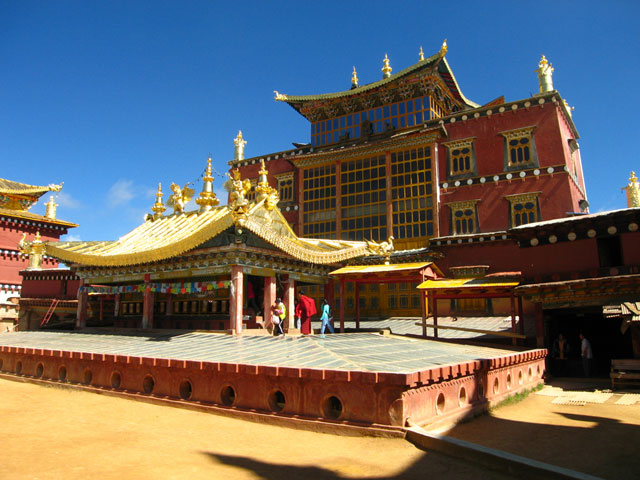 |
| [ Optional ] Songzanlin Monastery: Songzanlin Monastery, or 'Little Potala' as it is affectionately known, is a spiritual place that invites you to discover the mystery and traditions of Tibetan Buddhism. It is the largest Tibetan Buddhism monastery in Yunnan Province. Such a sacred place seems to purify the soul. |
|
| Day 8 Zhongdian, Kunming, Jianshui ( B,L ) |
| After breakfast, transferred to Zhongdian airport to catch the morning flight back to Kunming. Upon arrival at Kunming airport, be met and transferred to Jianshui county directly (140 KM / 3.5 hours) to visit the garden of Family Zhu, an example of a typical residential structure of southern Yunnan, built in Qing Dynasty. |
Shuanglong (Double Dragon) Bridge | Shuanglong Bridge is the largest scale and the highest valuable bridge in Yunnan ancient bridge, which inherits the traditional style of multi-arch bridge of China and blends the science of bridge construction and plastic arts into a unit, and therefore it's the excellent work of ancient bridge and …… | Temple of Confucious | Jianshui Temple of Confucious is the biggest temple in Yunnan Province. The buildings are set in a magnificent way, with glistening glazed-tile roofs, and the temple is considered the best of its kind in the province. Entering the gate of the temple, travelers will see a large pool at first. | Private Garden of Zhu Family | The Private Garden of Zhu Family lies in Jianshui Street, Jianshui county, has a total area of 20,000 square meters and a floor space of 5,000 square meters. This grand complex is a typical local residence with distinctive features. |
|
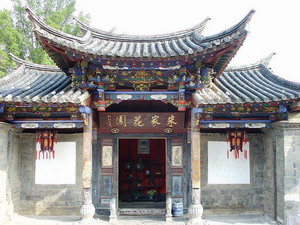 |
| [ Optional ] Private Garden of Zhu Family: The Private Garden of Zhu Family lies in Jianshui Street, Jianshui county, has a total area of 20,000 square meters and a floor space of 5,000 square meters. This grand complex is a typical local residence with distinctive features. |
|
| Day 9 Jianshui, Yuanyang ( B,L ) |
| Highlight morning tour to the Temple of Confucious, Shuanglong (Double Dragon) Bridge, Chaoyang Gateway Arch and the Zhang Family Garden in Tuanshan village. Afterwards, we'll drive to old town of Yuanyang (3.5 hours). We may enjoy the fresh air everywhere. Stay overnight in Yuanyang County for 2 nights. |
Zhang Family Estate | Zhang Family Estate is a fascinating collection of traditional Chinese architecture dwellings and temples. The wooden carvings in this area need to be seen to be believed, feature a tangle of creatures, figures and plants. There's great stone carvings too. | Tuanshan Village | Tuanshan Village, built in Qing Dynasty, regarded as the Gem of Chinese Civil Houses. Visiting thr village is like travelling to another China. Small, cobbled lanes and old women with bound feet blend leave you with impressions of timelessness, art and architecture. | Chaoyang Gateway Arch | Chaoyang Gate Arch's ignificance to Jianshui is the same as that of Tiananmen to Beijing; thus it has enjoyed the reputation of "the Miniature Tiananmen", as well as symbol of this ancient military town in the southeast border and an emblem of Jianshui, a historic and cultural city. |
|
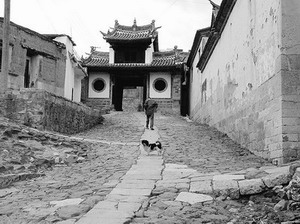 |
| [ Optional ] Tuanshan Village: Tuanshan Village, built in Qing Dynasty, regarded as the Gem of Chinese Civil Houses. Visiting thr village is like travelling to another China. Small, cobbled lanes and old women with bound feet blend leave you with impressions of timelessness, art and architecture. |
|
| Day 10 Yuanyang ( B,L ) |
| After simple Chinese breakfast in hotel, we'll drive 28 KM to visit the Duoyishu Rice Terrace in sunrise. Afterwards, drive back to join in the Sheng village's morning market, then transferred to visit the Bada Rice Terrace. After your lunch, transferred to visit the Qingkou Hani and Yi ethnic minority villages, and enjoy the Tiger Mouth (Laohuzui) Rice Terrace in sunset, the eighth world wonder. |
Hani Rice Terraces | Yuanyang Country is renowned for its rice terraces, sculpted by bare hands by the Hani people one thousand years ago, transforming a barren valley into a humid Eden; perfect for rice crops. It is a self sustaining ecosystem and a perfect example of a symbiosis with nature. |
|
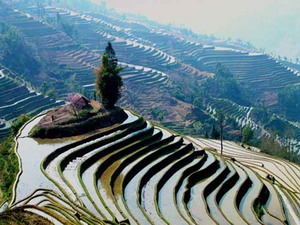 |
| [ Optional ] Hani Rice Terraces: Yuanyang Country is renowned for its rice terraces, sculpted by bare hands by the Hani people one thousand years ago, transforming a barren valley into a humid Eden; perfect for rice crops. It is a self sustaining ecosystem and a perfect example of a symbiosis with nature. |
|